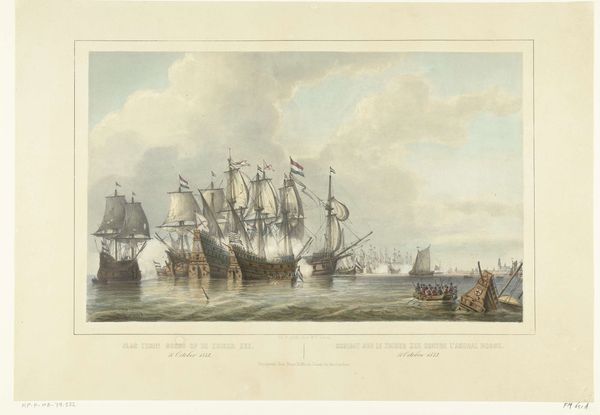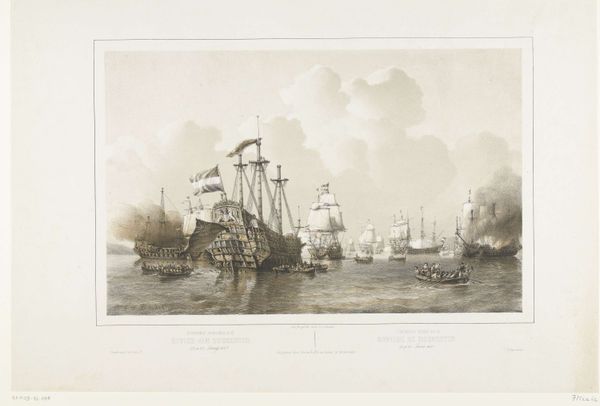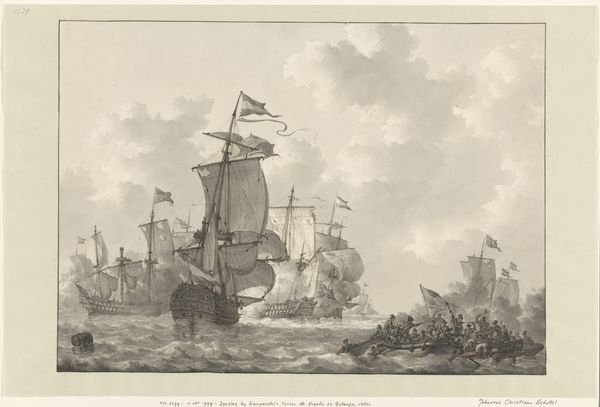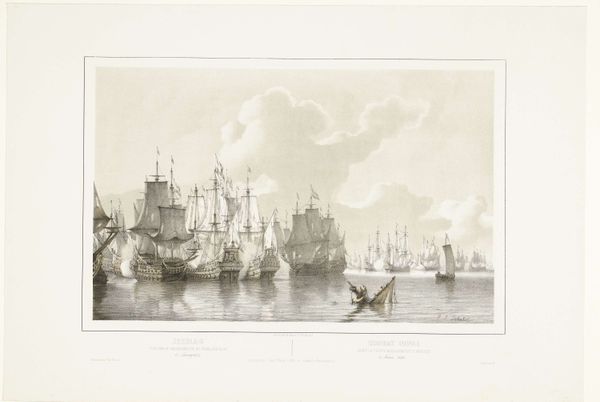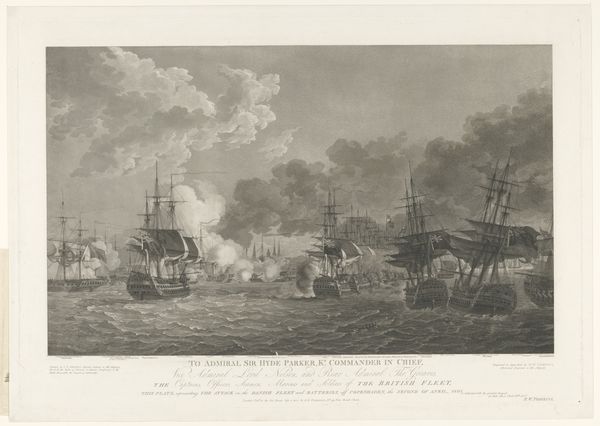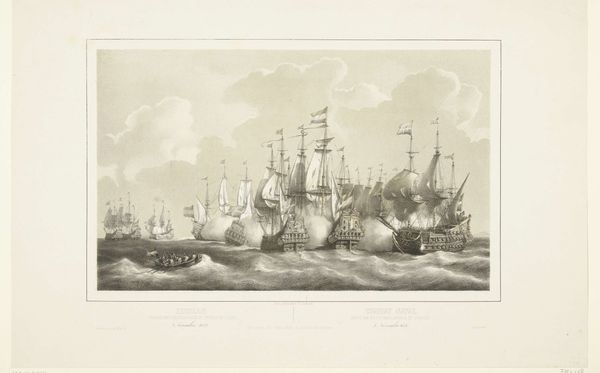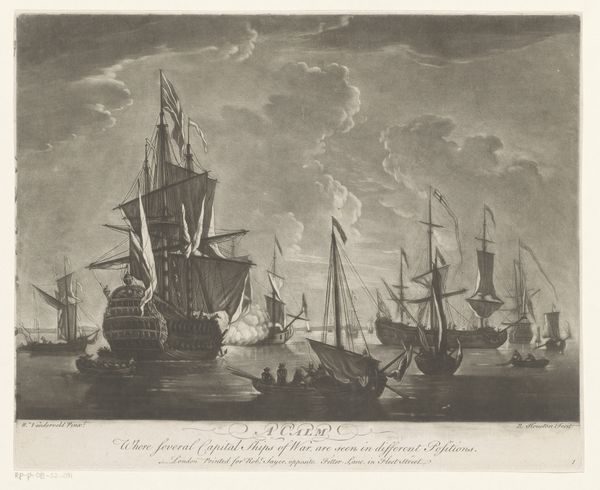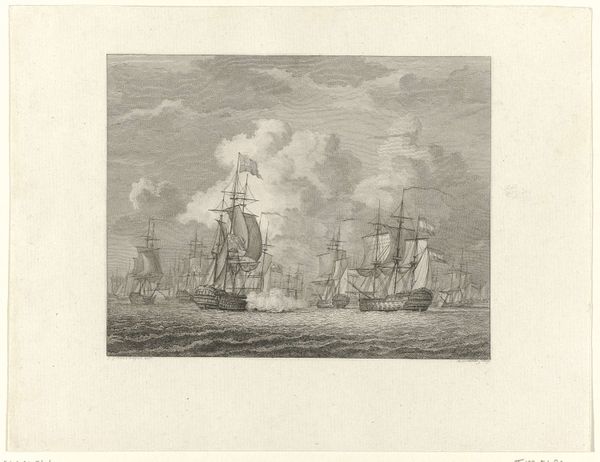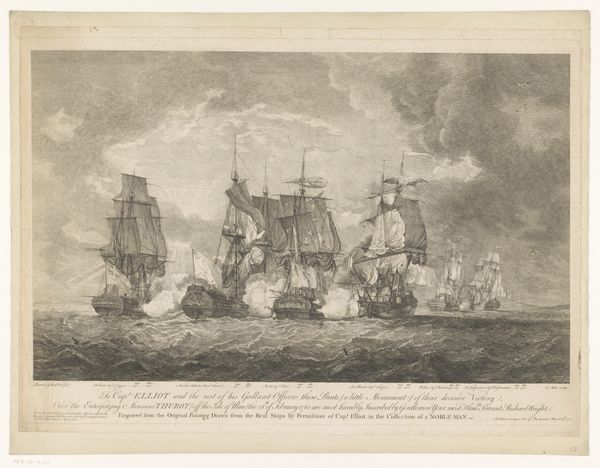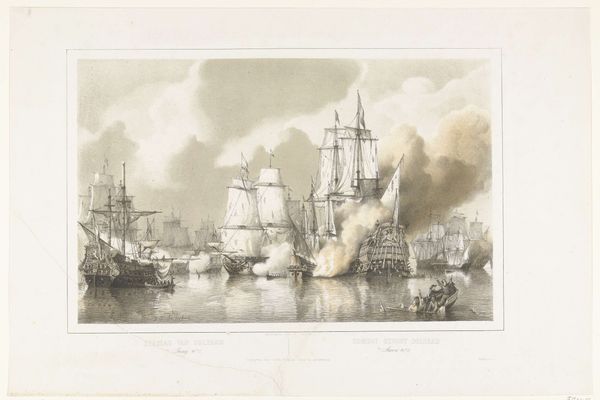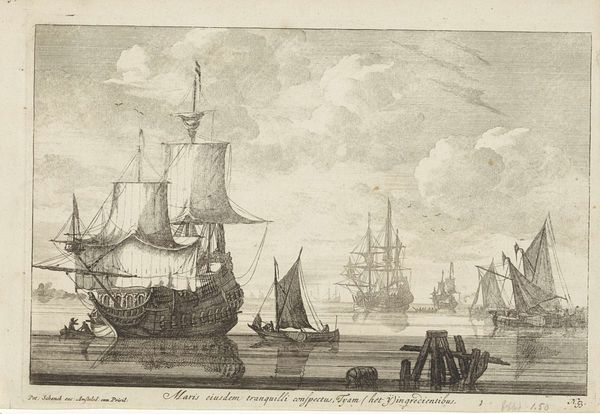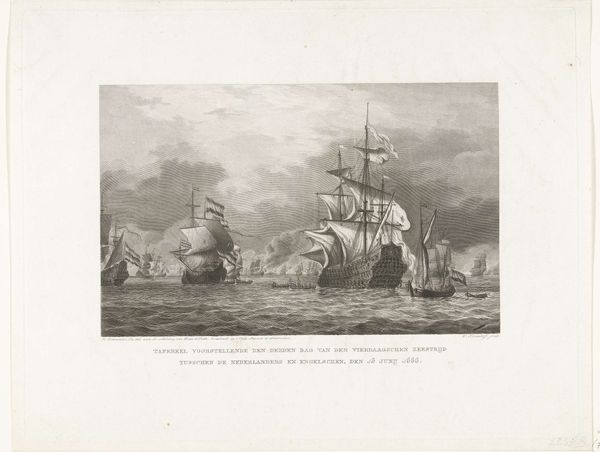
painting, print, watercolor
#
painting
# print
#
landscape
#
watercolor
#
watercolour illustration
#
genre-painting
#
history-painting
#
academic-art
#
watercolor
#
realism
Dimensions: height 348 mm, width 515 mm
Copyright: Rijks Museum: Open Domain
Curator: Petrus Johannes Schotel rendered this dramatic scene, "Zeeslag op de Gouwe, 1304," sometime between 1818 and 1865. It appears to be a painting, or perhaps a print utilizing watercolor. Editor: Immediately striking is its scale – it feels epic despite the soft wash of watercolor. There's an undeniable moodiness conveyed through the hazy grays and greens, and what looks like the chaos of naval warfare. Curator: The piece demonstrates a firm understanding of spatial composition. The artist's use of atmospheric perspective diminishes forms in the distance and emphasizes depth through variations in clarity. There’s also a delicate interplay of light, highlighting key narrative components. Editor: "Key narrative components" – which translates, of course, to military and colonial power being asserted through brutal naval combat. I see a romanticized depiction of violence rooted in expansionism. The painting normalizes power structures embedded in maritime history, which romanticizes war and obscures its broader impact on subjugated people. Curator: While your interpretation has merit, it would be reductive to confine our discussion merely to socio-political ramifications. Look at the careful arrangement of vessels and how the orthogonals converge. The artist utilizes repetition of vertical elements in the ship masts to lead the viewer's gaze toward a vanishing point on the horizon. It’s academically rigorous. Editor: I would argue against completely separating academic technique from its ideological implications, but that the ships in the center also draw the eye because of what looks to be an active invasion, a depiction of power and violence which is further highlighted by how small the humans look atop the vessel. It appears to portray human life as impermanent compared to the machines and forces we invent. Curator: Very astute. This examination has further revealed the formal brilliance within Schotel's watercolor. Its masterful blend of color, composition, and form showcases the depth of aesthetic possibilities. Editor: For me, this dialogue reveals the layered narratives interwoven with art history and production. We should critically examine the ethics presented and implied in "Zeeslag op de Gouwe."
Comments
No comments
Be the first to comment and join the conversation on the ultimate creative platform.
